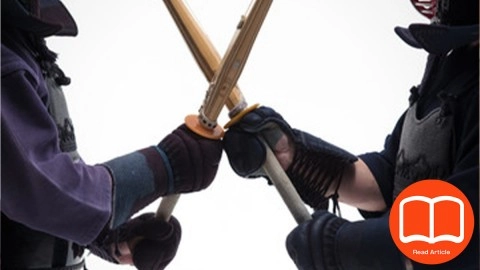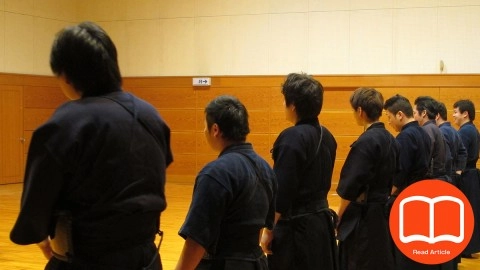Kendo Was Global Overall When It’s Seen from the World
11 30, 2020

World’s recognition of Kendo.
It’s old-fashioned thinking to say you are spreading Japanese culture through Kendo.
Japan doesn’t miss sending messages as a cultural powerhouse in an information-oriented society like these days.
That’s why international people know Japan well, and Kendo is a global martial art that belongs to the popular culture among Japanese culture. However, it could be said that the Kendo association will continue to develop in the future as Kendo spreads more to the world, with Japan in the core as a motherland of Kendo.
I’m going to tell you about the international view on Kendo this time.
Table of Contents
1.There Are Kendo Players in about 60 Different Countries
As you know, the same as Judo and Karate, Kendo is a martial art with a long history, and it even connects to Samurai if you follow the root.
Also, it has an international federation, and it is increasing its base in the world together with Karate’s Wolrd Karate Federation (WKF) and Judo’s International Judo Federation (IJF).
Currently, 70% of active Kendo players worldwide are located in Japan, and 30% are located overseas, but the international community can’t be ignored. Kendo is getting more popular each year overseas.
2.Why is it popular?
It seems people beyond cultural differences are attracted to ‘Kendo’ as a martial art rather than a sport and Japan’s mentality.
You don’t respond emotionally from start to finish when you are practicing or having a match, and you don’t get arrogant when you win, and you don’t regret when you lose. Also, Kendo players’ beauty and spirit such as ‘respect the manner’ by respecting the opponent, ‘you start with the manner and finish with the manner and a ‘reserved attitude’ which is the concentration of the mind without being careless until the end and adhering to a disciplined attitude are praised.
Such an attitude would feel exotic, as there are many people who express their emotions straight.
It is also why Kendo is popular with the Japanese, and there is a philosophy called ‘lifetime Kendo.’
Therefore, people of all ages beyond generations from the age of 3 to age of over 100 train and learn together on the same field regardless of their age. Foreigners are often shocked to find out that it is such a sport that people can continue to play healthily even if they get old.
They recognize that it is a sports culture forming human through lifetime study that they can continue to learn by training and having matches as they get older.
3.The Secret of Being Popular That You Often Hear
Despite the above, due to the internet's influence, people can get information anywhere these days.
Accordingly, there are many people interested in the form of the sport rather than the mentality. What kind of impression would they have about a martial art fighting with a shinai and armor?
"It’s good to fight with a shinai."
"It’s speedy because the victory gets decided in an instance."
"It relieves stress when hitting other people while shouting."
"‘It’s interesting to synchronize my movements while swinging the shinai."
I can somehow feel the lightness in their footsteps because they can rather start interestingly like this. However, there are many cases that people who have concentrated for a long time think of Kendo as a martial art from a sport, and then they get fascinated by the profound spirit of Japan.
I heard that a certain Kendo shop has many customers from overseas. They ask for their name to be engraved in Kanji on their uniform or armor.
4.Which Country Actually Has the Most Kendo Players?
I can name Korea first as a country where Kendo is in full swing apart from Japan. Korea has the most Kendo players after Japan, and you can see their presence in international competitions.
Lately, Kendo players are increasing in the Asian region, including China, but it’s most prosperous in Europe regionally.
As an example, the Netherlands has about 15 academies. The Netherlands' size is almost the same as Kyushu, so it’s a significant number in terms of overseas’ competition population.
A guy enjoying Kendo in the Netherlands said, ‘it’s interesting to play with others, and they are precious colleagues playing Kendo together, and it’s very important to me.’ This guy started Kendo to move his body, but he now devotes himself to Kendo with many colleagues.
5.International Competition
Kendo, like Judo, Karate, and other martial arts, has an international competition called ‘World Kendo Championship: WKC’ where players from all over the world participate.
Federation Internationale de Kendo (FIK), established in 1970, is holding the championship, and it operates in Asia, America, and Europe alternately every three years after they held the first championship in the year of establishment. There weren’t many participating countries at the beginning, but about 56 countries are participating now. Many powerful nations are also appearing apart from Japan, as many foreign countries are building their strength lately. It is also evidence that fans are increasing in the world.
Japan held the 16th championship. Korea held the 17th championship, and it made headlines domestically.
Communication between players after finishing their matches is also the beauty of the international competition. The type of training that Kendo’s homeland Japanese players are doing each day is something that foreign players care about in their view. Also, the exchange with overseas’ players playing each day seriously would be a big stimulation for Japanese players.
6.Which Country is Japan’s Rival?
A world championship is where strong players from all over the world gather. Then, which country can be called Japan’s rival in the world championship?
Japanese men’s team’s consecutive wins, which continued from the 1st championship, stopped in the 13th championship (2006) because Japan lost to the U.S. in the semifinal of men’s team competition. It’s the only time that Japan missed out on the championship in all of the past.
It seems Japan is overwhelmingly strong, but Japan kept having desperate battles with Korea in most championships since the 10th championship, and Japan has been winning by a narrow margin.
If you look through past second and third place countries’ men and women separately, Korea had the most names on the podium for both men’s and women’s division after Japan. Countries and regions like Brazil, the U.S., and Taiwan are ranked after Korea. It seems countries that had brought Kendo culture at a comparatively early stage as they are close to Japan geographically or influenced by Japanese people’s migration are ranked high.
Japanese coach has taught the emerging country Hungary, and they are fighting well against Germany, Italy, and France, where they have a long history of Kendo in Europe.
When you compare the population, China has about 10.5 times more, and the U.S. has about three times more population than Japan. Especially, China has a rapidly growing number of Kendo players in the past few years, perhaps due to shining economic development.
Japan still has more Kendo players now, but it might not be long before countries that haven’t been mentioned above build up their strength and become Japan’s rival country if Kendo spreads further overseas.
7.Summary
Isn’t it an unexpected fact that Kendo, which has a strong Japanese cultural color compared to other famous martial arts and isn’t part of the Olympic Games, is accepted as a familiar exercise overseas?
Japanese culture has spread further than before due to increased tourists visiting Japan and dispatching of information through the internet and other media in recent years, so Japan’s merit and beauty are also being assessed overseas.
"It starts with the manner and ends with the manner" represents a very Japanese movement, but many foreigners have a good impression. More players from overseas visit Japan to participate in the Japanese competition each year, and we would like to build a good relationship where we can improve our skills by matching them.







